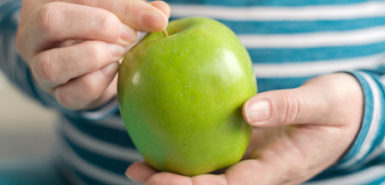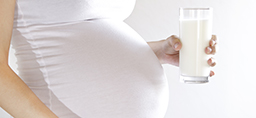
Pregnant mamas need to eat lots of healthy foods to ensure they’re growing a healthy baby—and to keep themselves healthy, too.
If you’re a pregnant mom who is already eating healthy, you don’t need to add any extra calories to your diet in the first trimester.
In the second and third trimester, however, you need 300 extra calories per day.
So, 300 calories. What does that look like?
It could be a carton of low fat yogurt, a few crackers and a piece of fruit. Or a glass of low fat milk and a turkey sandwich without mayo or cheese. Maybe half an English muffin with 1 tablespoon of peanut butter, 3/4 cup of grapes and a piece of string cheese.
The American Pregnancy Association recommends two to four servings of fruit per day and four or more servings of vegetables per day. The association also recommends pregnant moms get 70 milligrams of vitamin C daily, although other sources recommend up to 85 milligrams.
What fruits and vegetables are high in vitamin C?
Here’s the delicious list:
- Oranges. This is a great fruit for vitamin C and folate.
- Mangos. You can get 100 percent of your vitamin C in 1 cup of mangos.
- Lemons. These can help with pregnancy constipation.
- Grapefruit. One whole grapefruit has 80 milligrams of vitamin C.
- Berries. All berries are great, but strawberries especially so. A single cup contains 89 milligrams of vitamin C.
- Bell peppers. These are quite high in vitamin C, but they also contain a good amount of vitamin A.
- Broccoli. In addition to vitamin C, broccoli has omega-3 fatty acids.
- Tomatoes. These deliver a sizable dose of vitamin A.
- Snow peas. You’ll find a moderate amount of vitamin C in these, but they also have vitamin K.
Folic acid
Folic acid is a B vitamin that serves several purposes for pregnant moms. It helps produce blood (red blood cells) and is critical in some of the developmental processes for the fetus.
The more common thing people have heard about folic acid is that it helps with the development of the baby’s brain and neural tube during the growth process inside mom. The neural tube, of course, will grow to form the baby’s spinal cord.
During pregnancy, it’s recommended that mom get about 400 micrograms to 800 micrograms of folic acid each day. (That’s 0.4 to 0.8 milligrams.)
Without enough folic acid, your baby’s neural tube might not close, causing conditions such as spina bifida, an incomplete closing of the spinal cord or vertebrae, or anencephaly, a condition in which the brain doesn’t completely develop.
A proper amount of folic acid in your diet can reduce the chances of these complications by at least 50 percent, according to the CDC. When possible, the CDC recommends taking folic acid at least one month in advance of pregnancy.
But even while folic acid is important to take before you actually become pregnant, it may not always be possible. A 2011 study found that about half of all pregnancies in the U.S.—or about 2.8 million—were unplanned.
With so many unplanned pregnancies, it’s recommended that women of childbearing age take steps to ensure they’re getting enough folic acid as soon as possible. Folic acid is also an ingredient in prenatal vitamins.
What food items have folic acid or folate?
- Green leafy vegetables (spinach, broccoli, asparagus, okra)
- Citrus fruits
- Avocados (also a great source of essential fatty acids)
- Lentils, beans, and peas
- Cereals
 /a>
/a>
 /a>
/a>
 /a>
/a>